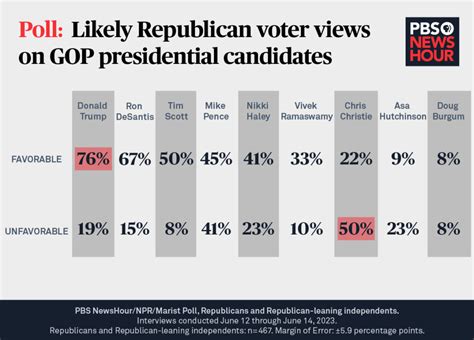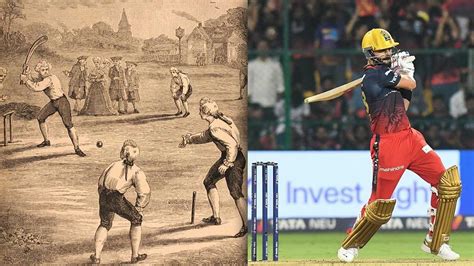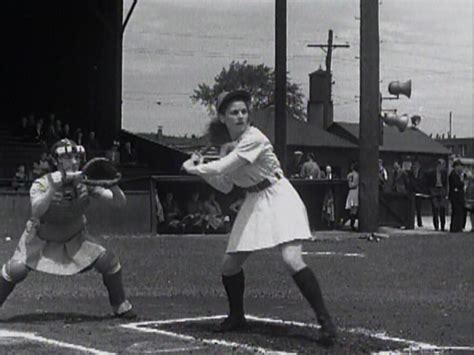Discover how social media enhances baseball fan engagement, effective strategies, influencer roles, and future trends for optimal interaction and success measurement.In today’s digital age, social media plays a transformative role in how fans connect with their favorite sports, particularly baseball. The Social Media Impact on Baseball Fan Engagement explores this dynamic relationship, revealing how various platforms serve as powerful tools for enhancing fan interaction and loyalty. As teams and players leverage social media to foster relationships with their audience, they create a vibrant community that extends beyond the ballpark. This article delves into effective strategies, the influence of key figures, and best practices that organizations can implement to optimize their online presence. Furthermore, we’ll look at future trends that promise to shape the landscape of fan engagement in baseball, making it an exciting time for enthusiasts and professionals alike. Join us as we uncover the myriad ways social media is redefining the fan experience in America’s beloved past-time.
How Social Media Boosts Baseball Fan Engagement
Social media has revolutionized the way fans interact with their favorite baseball teams and players. By providing real-time updates and interactive content, platforms like Twitter, Facebook, and Instagram have become essential tools for enhancing social media baseball engagement.
One of the primary ways social media boosts fan engagement is through direct interaction. Teams can communicate with fans instantly, answering questions, sharing behind-the-scenes content, and promoting upcoming events. This transparency and accessibility create a sense of community among fans, fostering loyalty and enthusiasm.
Moreover, social media serves as an excellent platform for content sharing. Highlights, player interviews, and user-generated content are widely shared, increasing visibility and encouraging discussions among fans. By actively participating in these conversations, teams can garner feedback and insights, allowing them to tailor their marketing strategies to meet the interests of their audience.
Engagement is further driven by live interactions during games. Teams can host Twitter polls, Instagram stories, or Facebook live sessions to engage fans in real-time, making them feel like part of the action. These initiatives not only keep fans entertained but also encourage them to participate and share their experiences, thus amplifying the reach of the team’s brand.
Additionally, the incorporation of multimedia content, including memes, videos, and infographics, enhances the fan experience on social media. Fans appreciate relatable and humorous content that resonates with their interests, creating stronger bonds with the team. Such engaging content can also go viral, expanding the team’s follower base and enhancing overall social media baseball engagement.
The strategic use of hashtags and fan challenges promotes user-generated content, incentivizing fans to create and share their unique experiences related to their teams. This not only increases visibility but also fosters a sense of belonging among the fan base. In turn, this collective engagement significantly boosts the overall presence of the team in the digital landscape.
Developing Effective Strategies for Social Media Interaction
To enhance social media baseball engagement, it’s crucial for teams, players, and leagues to develop effective strategies that resonate with their audience. Here are several actionable approaches to optimize social media interaction:
- Identify Your Audience: Understanding who your fans are—demographics, interests, and behaviors—allows for tailored content that speaks directly to them.
- Create Interactive Content: Posts that encourage participation, such as polls, quizzes, and contests, can significantly increase engagement. For example, ask fans to vote for their favorite player or predict game outcomes.
- Utilize Live Streaming: Streaming games, behind-the-scenes moments, or even player Q&A sessions in real-time can create excitement and foster a sense of community among fans.
- Leverage User-Generated Content: Encourage fans to share their experiences and tag your team’s social media accounts. Showcasing fan content can enhance loyalty and engagement.
- Maintain a Consistent Posting Schedule: Regular updates help keep your audience informed and engaged. Utilize a content calendar to plan and schedule posts around key events, game days, and player highlights.
- Engage with Your Audience: Responding to comments and messages promptly helps build relationships and encourages further interaction. Personalizing responses can make fans feel more valued.
- Collaborate with Influencers: Partnering with relevant influencers or popular players can extend your reach and credibility, attracting new fans while keeping current ones engaged.
- Monitor Analytics: Use analytics tools to track engagement rates, audience growth, and post-performance. This data can guide future content strategies and help refine your approach to social media baseball engagement.
By implementing these strategies, baseball organizations can significantly enhance their social media baseball engagement, creating a vibrant online community that translates into greater fan loyalty and support.
Measuring the Success of Social Media Baseball Engagement
Measuring the success of social media baseball engagement is crucial for teams, leagues, and brands looking to optimize their digital presence and deepen fan connections. Here are some key metrics and methods to evaluate the effectiveness of engagement strategies:
1. Engagement Rate: This metric is calculated by dividing the number of interactions (likes, comments, shares) by the total number of followers or impressions. A higher engagement rate indicates that your content resonates well with fans.
2. Follower Growth: Tracking the growth in followers over time can help determine the effectiveness of campaigns. A steady increase signals that fans are actively interested in connecting with the team or brand.
3. Reach and Impressions: Measuring how many people see your posts (reach) and how often they see them (impressions) provides insights into how well content is distributed across social media platforms. High reach often correlates with increased recognition and engagement.
4. Sentiment Analysis: Utilizing tools to gauge fan sentiments (positive, negative, neutral) can help understand how audiences feel about the brand or team. Analyzing comments and feedback provides qualitative insights that complement quantitative data.
5. User-Generated Content (UGC): Encouraging and measuring UGC can enhance your brand’s community involvement. Monitoring the volume and type of UGC can help assess fan engagement levels and emotional investment.
6. Conversion Rates: Assessing how many social media interactions translate into ticket sales, merchandise purchases, or other desired actions helps measure the direct impact of social media efforts on revenue and fan engagement.
7. Video View Stats: With the rise of video content, monitoring views, watch time, and retention rates on platforms like YouTube and Instagram Reels is essential. This helps determine how effectively video content engages fans.
Combining these metrics provides a comprehensive view of social media baseball engagement effectiveness. Regularly reviewing and adjusting strategies based on data analysis ensures teams and brands can maintain strong connections with their fanbase.
The Role of Influencers in Baseball Fan Engagement
In today’s digital landscape, the influence of social media cannot be overstated, particularly when it comes to social media baseball engagement. Influencers, with their large followings and ability to sway public opinion, play a pivotal role in shaping baseball’s online community.
Baseball influencers range from former players and sports analysts to fan personalities and content creators. Their authentic connection with followers allows teams and brands to reach a targeted audience more effectively than traditional advertising methods. By collaborating with these influencers, baseball organizations can enhance their visibility and credibility, tapping into niche fan bases and promoting engagement in meaningful ways.
One of the most effective strategies influencers use is storytelling. They often share personal anecdotes, game experiences, and behind-the-scenes content that resonates with fans on an emotional level. This type of relatable content encourages fan interaction, driving discussions and boosting social media baseball engagement. Moreover, influencers can also host giveaways or social media challenges that entice fans to participate, further weaving the fabric of community around the sport.
Furthermore, the real-time interaction that social media allows creates a dynamic space where influencers can respond to fan questions and comments, fostering a sense of connection and ensuring fans feel valued. Fans are more likely to engage when they perceive a genuine relationship with influencers and the teams they represent.
The role of influencers in amplifying social media baseball engagement cannot be overlooked. Their ability to connect, inspire, and mobilize audiences plays a crucial role in driving fan loyalty and interaction, ultimately enhancing the overall experience of baseball fandom in the digital age.
Best Practices for Enhancing Social Media Engagement in Baseball
Enhancing social media baseball engagement requires a strategic approach that caters to fans’ interests and promotes interactive experiences. Here are some best practices that can help baseball organizations effectively boost their social media presence and engage with fans:
- Consistency is Key: Regularly posting updates, game highlights, player interviews, and behind-the-scenes content keeps fans coming back for more. Establish a consistent posting schedule to cultivate a reliable presence.
- Interactive Content: Use polls, quizzes, and contests to encourage fans to participate. This not only promotes engagement but also builds a community atmosphere around the team.
- Visual Storytelling: Share high-quality images, videos, and infographics that tell a story. Engaging visuals can captivate audiences and encourage sharing, effectively increasing reach.
- Engage with Fan Content: Reposting fan reactions, artworks, and other user-generated content fosters a sense of belonging. This recognition can motivate fans to keep interacting.
- Utilize Live Streaming: Streaming games, practice sessions, or Q&A sessions with players on platforms like Instagram Live or Facebook Live can enhance real-time engagement and deepen fans’ connection with the team.
- Leverage Hashtags: Create and promote team-specific hashtags to facilitate community discussion. Encourage fans to use these hashtags when posting about games or experiences.
- Collaborate with Influencers: Partnering with social media influencers who share a passion for baseball can help reach new audiences and boost engagement through varied perspectives.
- Engage in Conversations: Respond to fan comments, messages, and mentions. Acknowledging fans directly creates a more personal connection and encourages ongoing dialogue.
- Monitor Analytics: Use analytics tools to track engagement metrics and learn what type of content resonates best with your audience. Adjust strategies based on these insights.
- Incorporate Fan Feedback: Actively seek out fan feedback on social media strategies, content types, and engagement initiatives. This involvement can enhance their loyalty and commitment to the team.
By implementing these best practices, baseball organizations can create an enriching social media baseball engagement experience that resonates with fans and boosts overall fandom.
Future Trends in Social Media and Baseball Fan Engagement
As we look ahead, the landscape of social media baseball engagement continues to evolve rapidly. Several emerging trends are shaping how baseball organizations interact with fans, create content, and foster community engagement. Here are some key trends to watch for in the near future:
1. Increased Use of Video Content: Video continues to dominate social media platforms, and baseball teams are expected to leverage this by producing more behind-the-scenes content, live game highlights, and player interviews. Short-form videos, particularly on platforms like TikTok and Instagram Reels, will likely become a primary medium for engaging younger audiences.
2. Augmented and Virtual Reality Experiences: As technology advances, augmented reality (AR) and virtual reality (VR) are set to enhance fan experiences. Teams may offer virtual stadium tours, AR stats overlays during games, or immersive experiences that allow fans to feel closer to the action, even from home.
3. Personalized Fan Interactions: With advancements in data analytics, teams will be able to tailor their content and engagement strategies to meet individual fan preferences. This personalization can lead to more meaningful interactions and higher engagement rates among followers, making fans feel valued and connected.
4. Enhanced Community Building: Baseball teams are likely to place a greater emphasis on building communities through social media. This includes fostering discussions among fans, encouraging user-generated content, and creating hashtags that promote camaraderie and interaction amongst supporters.
5. Integration of E-commerce: Another trend is integrating e-commerce directly within social media platforms. Fans will be able to purchase merchandise, tickets, and exclusive experiences seamlessly while engaging with their favorite teams on platforms like Instagram and Facebook.
6. Gamification of Engagement: Teams may adopt gamification strategies to enhance social media baseball engagement. This could include interactive quizzes, prediction games, and fantasy leagues linked to real-time statistics, encouraging participation and interaction from fans.
7. Focus on Social Responsibility: There will likely be a continued trend in making social media engagement more community-focused. Teams may promote social responsibility campaigns, connecting players with community initiatives and encouraging fan participation in charitable events.
As these trends unfold, they will redefine how teams interact with their fanbase, making social media baseball engagement not only more dynamic but also more integrated into the overall fan experience and baseball culture.
Frequently Asked Questions
How has social media changed the way baseball fans interact with their favorite teams?
Social media has created a platform where fans can directly engage with teams, players, and other fans in real-time, allowing for immediate feedback and interaction, which enhances their emotional connection to the game.
What role do social media influencers play in baseball fan engagement?
Social media influencers can help amplify a team’s message, create excitement around games, and foster community by sharing experiences that resonate with fans, enhancing their overall engagement.
Are there specific platforms that are more effective for engaging baseball fans?
Platforms like Twitter, Instagram, and TikTok have proven to be particularly effective, as they allow for quick updates, visual storytelling, and shareable content that resonates with the fanbase.
How do teams utilize social media to boost attendance at games?
Teams often use social media to promote upcoming games, share special promotions, and create buzz through interactive content, thus encouraging fans to attend matches in person.
Has social media impacted how fans discuss and analyze games?
Yes, social media has fostered a culture of immediate analysis and discussion, where fans can share opinions and insights during and after games, creating a dynamic conversation around baseball.
What challenges do baseball organizations face in managing their social media presence?
Organizations must navigate potential negativity, control messaging, and address any controversies swiftly, while also ensuring they maintain genuine and engaging interactions with their fans.
How can teams measure the success of their social media engagement efforts?
Teams can measure success through metrics such as engagement rates, follower growth, reach of posts, and conversion rates on ticket sales or merchandise, as well as sentiment analysis to gauge fan reactions.









